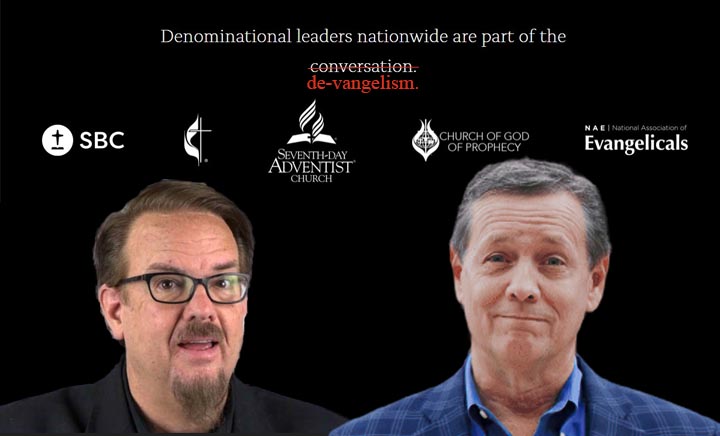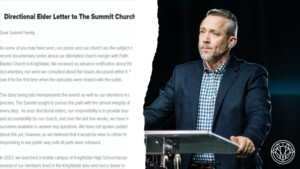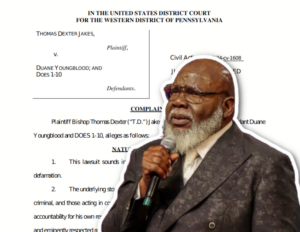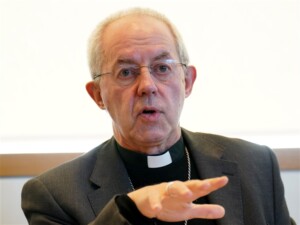The De-vangelism of the Southern Baptist Convention

Every week, faithful church members dutifully write checks to support the Lord’s work at their local Baptist church, and thousands of these churches turn over a percentage of this giving to the para-church cooperation known as the Southern Baptist Convention. The bulk of this funding goes to support international evangelism/church planting through the International Mission Board (IMB) and church planting in the United States through the North American Mission Board (NAMB), cementing the SBC’s reputation as a decidedly evangelistic organization.
It was under this missional umbrella that NAMB made a recent decision to partner with the neo-christ, ecumenical marketing campaign known as He Gets Us (HGU), a project of the 501c3 donor-advised fund Servant Foundation that promotes what they call the “real Jesus” – a “Jesus” who “accepts everyone.” While the group claims to not be “left” or “right,” a cursory examination of their website paints a radically different picture.
Rather than a Jesus who came to “seek and save the lost” (Luke 19:10) whose ambassadors implore the lost to be reconciled to God (2 Cor. 5:20) and who “go into all the world and proclaim the gospel to the whole creation” (Mark 16:15), the “Jesus” that gets us is relevant and relatable, offering teaching and examples that “just might help you with your job, family, or relationship challenges, as well as issues like rejection, anxiety, depression and more.”
This devil’s bargain came to the attention of SBC pew-sitters when NAMB recently encouraged churches to join them for a webinar to learn how to join the HGU “movement,” and be included on a list of churches the campaign would refer “seekers” to upon being contacted via the campaign’s website. NAMB described the movement as “the biggest campaign to change hearts and minds about Jesus,” in the event listing for the webinar hosted by president Kevin Ezell and Wheaton College Dean and expert-on-everything-by-way-of-internet-scrubbing institutional mainstay Ed Stetzer – whose fingerprints are all over the HGU effort.
Almost immediately, conservative Christians and SBC pastors on social media began exposing that the campaign was promoting a woke, heretical Jesus that bore little if any resemblance to the true Christ. Ezell was forced to immediately backtrack from the campaign, which he called “too broad” to “directly connect with” in a hastily-penned mea culpa, adding that NAMB “will pray that the conversations begun by this campaign will lead to gospel-centered conservations (sic) and cause many to seek to learn more about Jesus.”
Just a few months prior, Ed Stetzer – not one to break his streak of being on the wrong side of every issue (Wuhan lab leak, COVID-persecuted churches, fake Heaven tourism books at Lifeway), began shilling for Woke Jesus in April via his column at Churchleaders.com, in which he first destroys a strawman of what he considers most evangelicals’ brand of “sharing faith” before advocating for the focus-group-tested, HGU strategy that “break[s] the mold of what most Christians think of when they think of evangelism.”
Note: Since Stetzer has a habit of scrubbing columns and social media posts once he’s proven wrong, here’s the archived link to the above-linked column.
Stetzer reminds his readers that, rather than simply and straightforwardly proclaiming the Gospel and imploring the lost to be reconciled to God (2 Cor. 5:20), we would do well to adjust our approach in light of the negative opinions, subjective feelings, and false impressions of the lost. He claims that a straightforward offer and proclamation of God’s Truth stands in opposition to love, writing (emphasis mine), “when communicating the components of a message becomes more important than how we share, we’ve lost sight of the good news of Jesus’ life, and ultimate death, for all humanity.” This “it’s not what you said, it’s how you said it” framework stands in stark contrast to Jesus’ evangelistic commissioning to the disciples, where He instructed them simply: “Go into all the world and proclaim the gospel to the whole creation. Whoever believes and is baptized will be saved, but whoever does not believe will be condemned” (Mark 16:15-16). As Darrell Harrison aptly pointed out while discussing the HGU campaign, “The main thing Jesus ‘gets’ about all of us is that we’re sinners.”
Creating the kind of absurd, blind irony that only Ed Stetzer could pull off, he claims that a lost person may very well feel commoditized if a believer insists on “getting out [the] full presentation” of the Gospel – apparently preferring an approach that deliberately withholds parts of Jesus in order to craft a message palatable to the lost person. Stetzer misses the likelihood that the Gen-Z target (with their notable desire for authenticity) will sniff out the inauthenticity of a Christian offering a version of Jesus personally marketed to them. Then of course there’s the inconvenient fact that to maintain the lost person’s interest in “Jesus” one must avoid completing the Christological picture with inconvenient truths like repentance or the call to pick up one’s cross.
This tried-and-true sales strategy is the core of the $100 million campaign, which (consistent with its shameless salesmanship) guarantees its partner churches “success” – that is, success in generating wide gate-scale YouTube views, website visits, and placements of ad spots on Monday Night Football right next to ads for gambling, beer, and every other branded vice that might appeal to the unregenerate heart.
Yet rather than a call to repentance and trust in Christ for delivery from sin, TV viewers are comforted by the claim that Jesus was (and apparently is) just another conflicted, anxious, and troubled social justice-concerned beardbro. Whatever a lost Gen-Z heart might desire, wonder, love, or oppose – Jesus gets it. He validates it, unlike those hypocrites in the church. Neo-Christ gets you, unlike those judgy Christians who keep insisting you are a lost sinner in peril.
Stetzer is careful not to entirely dismiss the “strategy” of simply proclaiming the Gospel to the lost world (like those early church pre-literates who didn’t even have research or focus groups!), but insists that the He Gets Us strategy of moving the Jesus goalposts is simply an evangelism upgrade. Yet there stubbornly remains no biblical precedent for the soft-sell of “starting conversations” or even “sharing our faith,” only proclamation of the unadulterated Gospel call to “Repent, for the kingdom of heaven is at hand” – at any stage of personal familiarity.
The SBC has been wedded to the Church Growth, seeker-sensitive strategy of evangelism for decades – a strategy that replaces the Holy God standing in righteous judgment with Buddy Christ, and Buddy Christ would never judge a fly. Rather, he desperately wants you to be his friend. To quote pre-woke Matt Chandler, Jesus’ motivation in saving is “not so that you and him (sic) can be boys.” Buddy Christ bears little resemblance to the Holy Judge who calls on his children to “preach the gospel, and not with words of eloquent wisdom, lest the cross of Christ be emptied of its power” (1 Cor. 1:17).
Yet the North American Mission Board revealed the level to which the SBC downgrade has progressed in its thankfully short-lived partnership with the de-vangelistic HGU campaign. Beyond the simple continuation of its promotion of self-help guru Buddy Christ, NAMB was caught actively promoting partnership with a pro-gay, inclusivist, heretical false gospel campaign – a campaign whose falseness has been known for months. If not for an (honestly quite cursory) examination of the HGU campaign by discerning believers, Ezell and NAMB would still be encouraging SBC churches to hop aboard the inclusivist Jesus train with the United Methodists (also an active partner of the HGU campaign).
Note: As of this publishing, He Gets Us has removed the denominational logos and names seen in this article’s featured image above.
Even more troubling, Kevin Ezell apparently did at least some diligence on HGU and still yoked NAMB to the campaign, telling Stetzer in the recent webinar that he found the HGU ads to be “beautiful” and that people looking to evangelize (“share their faith” in modern lingo) are “going to love this.”
The president of the largest church planting network in the United States finding nothing objectionable about the heretical HGU campaign is yet another nail in the coffin of the once-conservative SBC.







They continue to push the envelope in every direction as far as they can until there’s an outcry. This wasn’t a mere oversight or “failure to do due diligence”, this was a continuation of a systematic plan to undermine the SBC in every way. The majority of the “pew-sitters” are so immersed in worldly culture that they don’t even notice until it’s something so egregious that it can’t be explained away.
And I agree with your first sentence. Every dollar we give to an SBC church funds this heresy.
Why should this surprise anyone? The SBC is almost overrun by cultural Christians who love them some Buddy Jesus. They raise their hands during the crescendos of the “worship” music every Sunday morning, well, the Sunday mornings when they are there anyway. Their version of Christianity costs them pretty much nothing. And though they’ve never invested much in knowing God through His Word, they think their false opinions are equal to any scholar. Shoot man, they even hear from God on a fairly regular basis. My experience of 25 years in the SBC is that almost no one in the denomination can discern sound teaching from heresy.